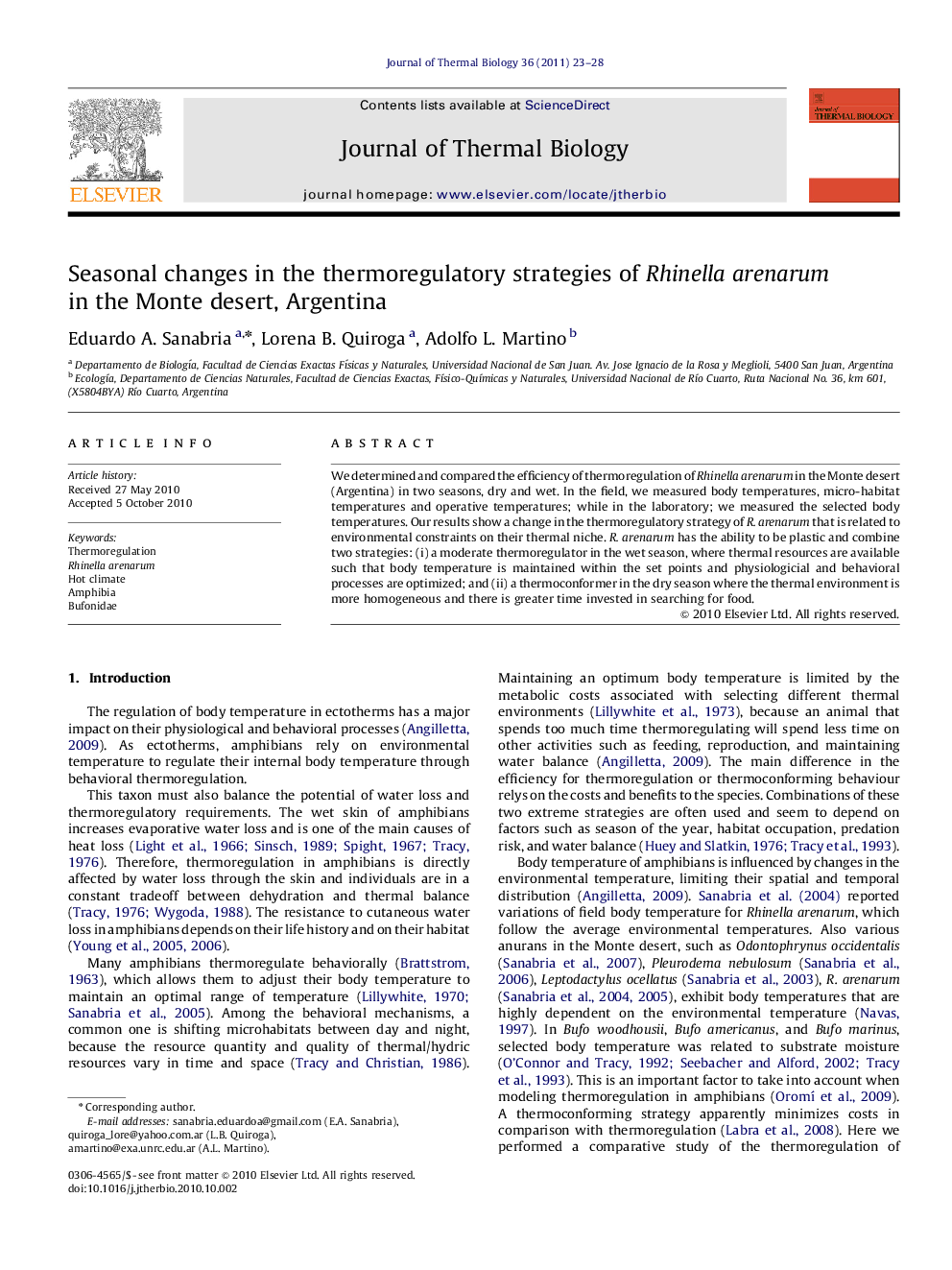| Article ID | Journal | Published Year | Pages | File Type |
|---|---|---|---|---|
| 2843246 | Journal of Thermal Biology | 2011 | 6 Pages |
We determined and compared the efficiency of thermoregulation of Rhinella arenarum in the Monte desert (Argentina) in two seasons, dry and wet. In the field, we measured body temperatures, micro-habitat temperatures and operative temperatures; while in the laboratory; we measured the selected body temperatures. Our results show a change in the thermoregulatory strategy of R. arenarum that is related to environmental constraints on their thermal niche. R. arenarum has the ability to be plastic and combine two strategies: (i) a moderate thermoregulator in the wet season, where thermal resources are available such that body temperature is maintained within the set points and physiologicial and behavioral processes are optimized; and (ii) a thermoconformer in the dry season where the thermal environment is more homogeneous and there is greater time invested in searching for food.
